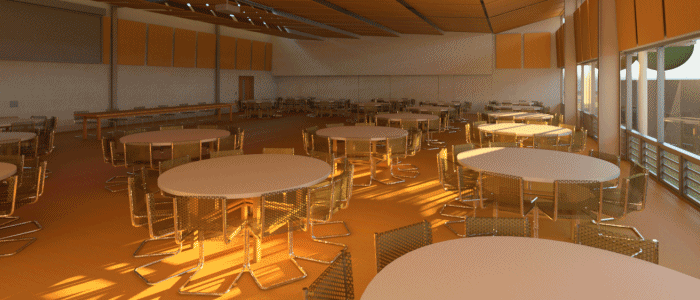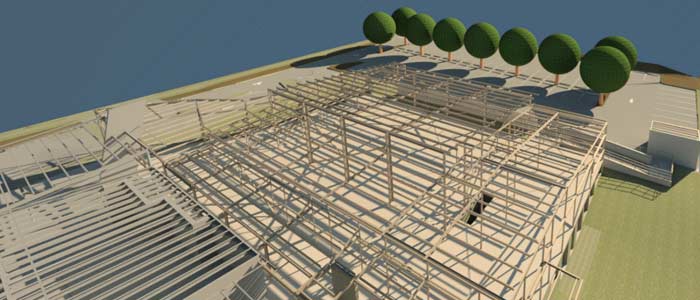
Far more than 3D modelling, BIM offers a range of measurable benefits for architects, builders, engineers and building owners.
Building information modelling (BIM) covers geometry, spatial relationships, light analysis, geographic information, quantities and properties of building components, project management and post-construction facilities management.
“It’s is far more than 3D CAD modelling – it’s a rich, multi-layered information source that allows us to collaborate in-house and with other consultants and architects,” said BIM & CAD Manager, Brett Jovanovich.
BIM data can be used to illustrate the entire building lifecycle; scope of works; and systems, components, assemblies and sequences can be shown in relative scale to each other and, in turn, relative to the entire project.
Managed BIM reduces the information loss associated with handing a project from design team, to construction team and to building owner. Each group can add to, and reference, all information during the collaboration.
“Issues can be identified much earlier in the process,” said Brett.
However this isn’t the only benefit – the industry has already seen numerous measurable positives from early BIM adoption:
- Increased understanding
- Reduced risk
- Improved efficiency
- Fewer problems on site
- Less waste
- Better value and quality
- Better buildings throughout their lifecycle
“The key to success with a BIM project is getting the information in early,” said Brett. “And of course, lots of communication.”
At Woolacotts, the team uses Autodesk Revit on a variety of projects.
“We have extensive experience collaborating with architects and services engineering consultants using Revit to coordinate structural, civil, hydraulic, and fire designs,” said Brett.
Recent BIM and Revit projects include:
- A major banking facility in Victoria
- Glenwood Community Resource Hub
- Chippendale Restorations Commercial Development, Rozelle
- Nepean College, Kingswood Campus health and support services building
- Smeaton Grange warehouse
As for the future of BIM, Brett predicts that BIM will become a standard requirement for all projects in the next few years.
“The decision to use BIM is driven by clients and government,” said Brett.
“In Singapore, the government has implemented it’s BIM roadmap that aims for 80% of the construction industry to be documented using BIM by 2015. It’s only a matter of time before we see that approach adopted here.”
If you would like more information about the benefits managed BIM could bring to your project, contact BIM & CAD Manager, Brett Jovanovich.




